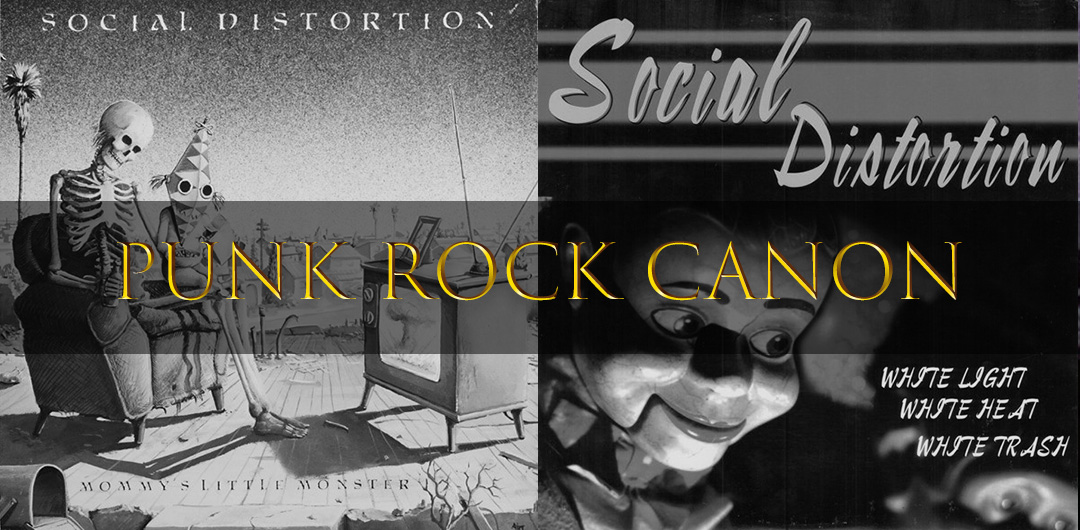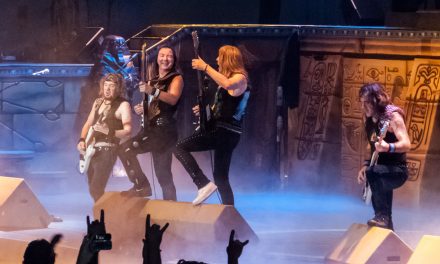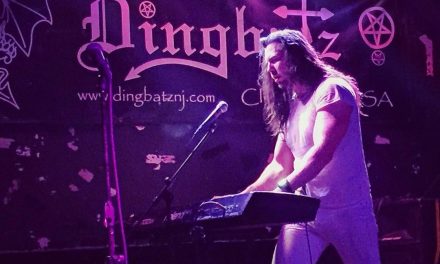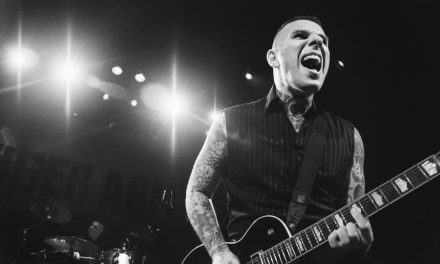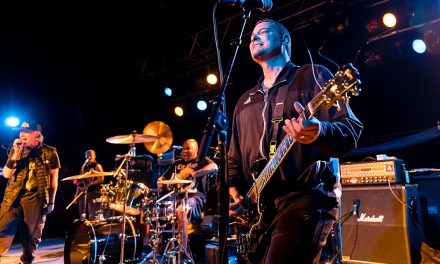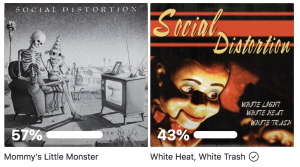 Welcome to the Punk Rock Canon, a monthly feature on Mai Tai Happy Hour where Hambone, a guest host and I sit down and argue over whether a particular punk rock album should be inducted into the pantheon of rock and roll. Sometimes we discuss one album and occasionally we pit two albums by one band against each other. Regardless, the final choice is yours. Everyone can vote for which album goes into the Punk Rock Canon by visiting the survey on my Facebook page. It typically runs for one week and is open to everyone.
Welcome to the Punk Rock Canon, a monthly feature on Mai Tai Happy Hour where Hambone, a guest host and I sit down and argue over whether a particular punk rock album should be inducted into the pantheon of rock and roll. Sometimes we discuss one album and occasionally we pit two albums by one band against each other. Regardless, the final choice is yours. Everyone can vote for which album goes into the Punk Rock Canon by visiting the survey on my Facebook page. It typically runs for one week and is open to everyone.
George: We are continuing the Punk Rock Canon with our first versus episode. This week, we are going to pit Social Distortion’s Mommy’s Little Monster versus White Light, White Heat, White Trash. Hambone, you chose this Canon, how about you kick things off.
Hambone: Back in the day, I loved Social Distortion. I still like Social Distortion, but I like them less the more I seen them live. I first saw them on the Warped tour in 1997. I remember standing by the soundboard in Asbury Park and Mike Ness, the singer, goes into this whole rant about how everything that’s punk rock is on MTV now and all the kids have blue hair and the crowd is getting into it. The sound guy just looks at me and says, “He said the same thing last night and the night before.” I was like, “He didn’t just make that up?” And he’s like, “It’s a canned speech he says it at every show. It’s his stage banter on this tour.” That was the most unpunk thing I heard in my life.
George: Hambone, instead of running down the band you picked for the Canon, maybe you should try to sell us on which album you prefer.
Kursse: Hambone, do you even like punk rock music?
Hambone: I do, I just think most punk rock is full of shit. It is what it is.
Mommy’s Little Monster was not the first Social Distortion record I got. I bought Mainliner: Wreckage from the Past at Let It Rock in Montclair, because they didn’t have Mommy’s Little Monster. That was my first real foray into Social Distortion. I think Mommy is a perfect record. Social Distortion, in that era, were walking a fine line between SoCal punk rock and the Rolling Stones. This was way before they turned into dad rock.
I grew up listening to classic rock and I held onto that album because it was different than most punk records that came out in the early ’80s. It’s got one toe in real rock and roll and it also has a whole foot steeped in SoCal punk rock. I love the song selection and appreciate that even though some of the songs are longer than traditional punk songs, it isn’t a long record. It’s also a really good indicator of the shape of things to come from Social Distortion and that kind of music in general.
George: I think we can all agree that the first time we experienced Social Distortion was while watching Another State of Mind in high school. Another State of Mind changed music for me. When I saw Youth Brigade and Social Distortion and Minor Threat create a punk rock scene on their own, I was blown away. When I heard the three best songs on Mommy’s Little Monster, which are the title track, “Telling Them” and “Another State of Mind,” I realized that there was something special about Social D. Then I went out and got Mommy’s Little Monster and realized that those were the three best songs on the record. Which is why I like Mommy’s Little Monster, but I don’t love it.
When I heard “I Was Wrong” from White Light on 120 Minutes I fell in love with Social Distortion. By that point. the band had spent years releasing the same album over and over again — everything from Prison Bound through Somewhere Between Heaven and Hell — were just one long record. I thought White Light, White Heat, White Trash was a breathe of fresh air that still stands up today. I also think it’s the quintessential Social Distortion record.
Josh Goldfarb: I love Social Distortion and the first time I heard of them was also while watching the Another State of Mind documentary, which everyone should see. Just don’t watch it with the commentary track on, because Mike Ness can’t remember much from that time. I love Mommy’s Little Monster and you are 100 percent right that the best songs are “Another State of Mind,” “Telling Them” and “Mommy’s Little Monster.” But having re-listened to this album the past few days, as well as White Light, this album is so much more diverse and varied than White Light, White Heat, White Trash. I love White Light and you can argue that the later album from 1996 was written better. It is certainly produced better and the musicianship is 100 percent better, but it’s not a better album, because every song sounds like the other songs on that album. There are 12 songs on that album and eight of them start with feedback.
Hambone: In fairness, one of the things that they have the commonality of is that Mike Ness only knows three guitar solos and he’s played all three on every single record. As far as production goes, I think it has a very ’90s sound. That said, I always looked at White Light, White Heat, White Trash as the culmination of what the band was trying to be when they released Mommy’s Little Monster. They are almost the alpha and omega of Social Distortion.
George: White Light, White Heat, White Trash was the first punk rock album that Social Distortion released in a very long time. I’m not going to say what’s punk or not, but their mid-period records were definitely leaning towards rockabilly and country.
Josh Goldfarb: They were amazing rock and roll albums.
George: White Light, White Heat, White Trash had songs like “Don’t Drag Me Down” and their cover of “Under My Thumb” were so much more raw and powerful than their more recent material.
Kursse: I’m not a big Social Distortion fan. The only two albums I owned of theirs were the self-titled album and Somewhere Between Heaven and Hell. I like Mike Ness’ voice but in some sense, to me, he’s always been a poor man’s Joe Strummer.
Hambone: I’ll too sweet that.
Let me qualify something here. When I nominate albums for the Punk Rock Canon, I nominate them from a lot of different standpoints. As much as we can 100 percent agree that Hambone will watch anything, I am kind of a picky bitch when it comes to music. Maybe because I grew up in it and I’ve been a musician my entire life, I look at it from standpoints beyond just blind love. There are some albums that I do blindly love, because to me, they mean a lot, but that doesn’t necessarily mean I think they deserve to be in the Canon.
Look, I hate The Offspring passionately, yet I recognize the significants of Smash, which is why I nominated it for the Canon. So as much as I shat on Social Distortion a little bit up front, that doesn’t take away from the fact that I see the impact of Mommy’s Little Monster and ultimately what they became. Don’t trust my reviews of movies and TV, but when it comes to music, I’ll put up a fight.
George: I struggled with this one. Because Mommy’s Little Monster is the album that got me into Social Distortion and Another State of Mind is the movie that sold me on punk rock. I watched that documentary and realized that we could put on shows. We watched that over and over again until we figured out how to do DIY shows, make our own music…
Josh Goldfarb: We all thought about taking an old bus, ripping out the seats and putting in beds.
George: The three songs on that record are on every old mix tape I made. But I also love songs on their early-’90s albums like “Cold Feelings.” Albums like Somewhere Between Heaven and Hell might actually be better albums front to back, but the redundancy is tiring on those records.
Josh Goldfarb: That redundancy continues onto White Light and it’s less on Mommy’s Little Monster. On Mommy’s Little Monster you have songs like “Moral Threat,” which is a five minute song. You have “Hour of Darkness,” which talks about the seedy underbelly of Los Angeles. At that time, the LA sound was The Germs, who talked about insanity and TSOL who sang about fantasy. When it came to singing about what was not discussed in LA — the non-movie star, the non-sun and surf stuff, you had X and Social Distortion.
George: And Bad Religion.
Josh Goldfarb: I disagree. I don’t think Bad Religion was talking about real street-level things. They were talking about politics.
Hambone: Let’s not forget that Mommy’s Little Monster starts with a real banger, “The Creeps.”
George: As an aside, White Light was also the last album featuring Dennis Danell on guitar and that was the last true version of Social Distortion, in my opinion.
Hambone: Mike Ness always had a great rhythm section. He could barely stand up, but his rhythm section always held it down. Dennis Danell was a very underrated rhythm guitar player.
Kursse: I think it’s hard to compare these albums. If these albums were released after each other, I think it would be a fair assessment. But to go from a bands first album, where their head space is completely different — they’re thirsty and young — to an album years later and compare them is a tough call. By that fifth or sixth album, that’s a different band that’s been through hell and back. It’s no longer a fun business that they are in.
Josh Goldfarb: Kursse brings up a good point. There’s a fifteen plus year difference between those records and those years were extremely important to Mike Ness and the rest of that band. Half the band had quit. Mike Ness had gone from being a 19-year-old drug addict to someone that was clean, been in and out of jail, married and had a kid. So, would it be fair to judge any of us now with what we were 15 years ago?
George: I don’t think it’s judging because I like both albums.
Josh Goldfarb: But is it fair to compare them?
George: Yes, because I say so and this is my Canon.
Josh Goldfarb: With that said, I says Mommy’s Little Monster.
Hambone: I’m saying Mommy’s Little Monster. Absolutely.
Kursse: Somewhere Between Heaven and Hell. No. I’m a first album guy and more often than not, a band’s first album is their best. I’m saying Mommy’s Little Monster.
George: Green Day is a great example of later albums being better than the first and I’m going to go with White Light, White Heat, White Trash. That tour was the first time I saw Social Distortion live at the Stone Pony with D-Generation and H2O. I hold that era close to my heart. So that’s my pick.
Click here to listen to the full podcast discussing which Social Distortion album should be in the Punk Rock Canon.
The discussion above was edited from the original transcriptions for readability.

